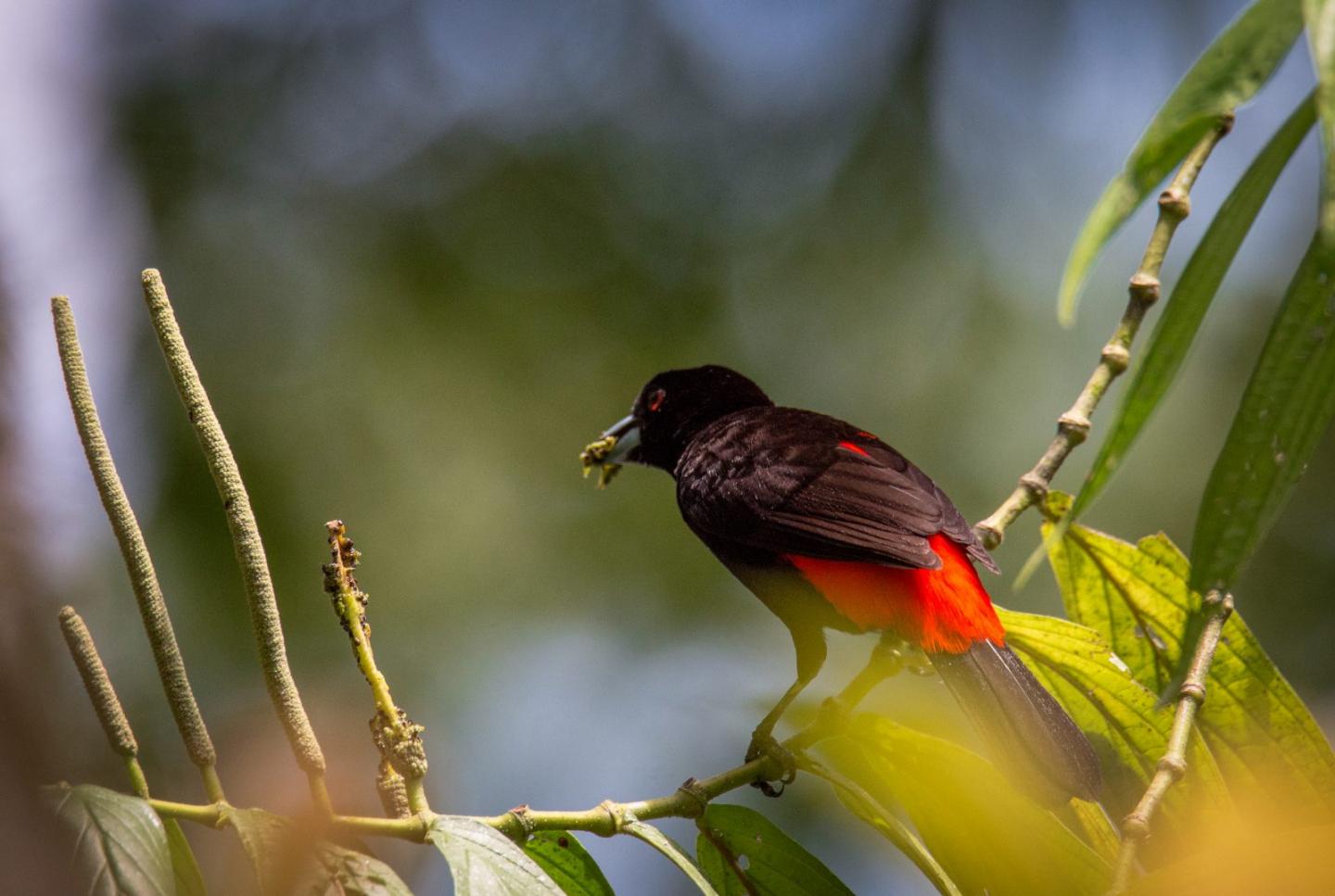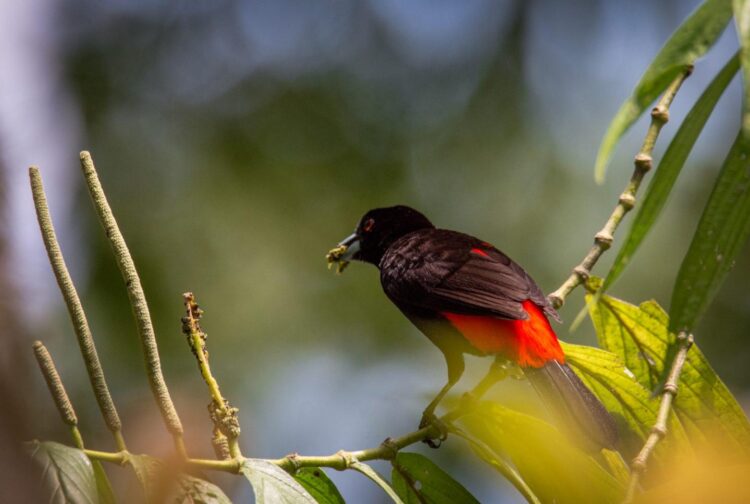
Credit: Bernadette Wynter Rigley.
We aren’t the only beings who enjoy feasting on tasty fruits like apples, berries, peaches, and oranges. Species like bats, monkeys, bears, birds, and even fish consume fruits — and plants count on them to do so.
Wildlife disperse their seeds by eating the fruit and defecating the seed elsewhere, thus carrying the fruit farther away and spreading the next generation of that plant. But attracting wildlife might also mean attracting harmful organisms, like some species of fungi.
Plants walk a fine line between attraction and repulsion, and to do this, they evolved to become complex chemical factories. Chemical ecologists at the Whitehead Lab at Virginia Tech are working to uncover why plants have such diverse chemicals and to determine the functions of these chemicals in plant-microbe and plant-animal interactions.
“There is still so much we don’t know about the chemical compounds plants use to mediate these complicated interactions. As we continue to lose global biodiversity, we are also losing chemical diversity and the chance for discovery,” said Lauren Maynard, a Ph.D. candidate in the Department of Biological Sciences within the College of Science.
Piper sancti-felicis is a neotropical shrub related to Piper nigrum, which produces black peppercorn. Although P. sancti-felicis isn’t as economically important as its peppery cousin, it fulfills an important ecological role as one of the first plants to colonize a recently disturbed area. It also serves as an important food source for wildlife, especially bats and birds.
At La Selva Biological Station in Costa Rica, Maynard and a team of international ecologists worked to better understand the evolutionary ecology of P. sancti-felicis. Their findings were recently published in Ecology and serve as a step forward in understanding why plants have such great chemical diversity.
By analyzing the samples, the team discovered 10 previously undocumented alkenylphenol compounds in P. sancti-felicis. Alkenylphenols are rare in the plant kingdom, as they have been reported only in four plant families.
The alkenylphenol compounds were not distributed evenly across the plant, though. Maynard found that fruit pulp had the highest concentrations and diversity of alkenylphenol compounds, while leaves and seeds had only a few compounds at detectable levels. Later, a pattern emerged: Levels of alkenylphenol were highest as flowers developed into unripe pulp, but then decreased as the pulp ripened.
When Maynard and her collaborators tested alkenylphenols with different species of fruit fungi, they found that the alkenylphenols had antifungal properties. But those same compounds also made the fruits less tasty to bats, which are the plant’s main seed dispersers.
This is a delicate balance: high levels of alkenylphenols protected the fruit from harmful fungi as it developed, but when it ripened, alkenylphenol levels dwindled so that bats would be interested in eating it.
“Many fungal pathogens attack ripe fruits and can make fruits unattractive to dispersers, or worse, completely destroy the seeds. Our study suggests that these toxins represent a trade-off in fruits: They do deter some potential beneficial partners, but the benefits they provide in terms of protecting seeds outweigh those costs,” said Susan Whitehead, an assistant professor in the Department of Biological Sciences.
This study is the first to document an ecological role of alkenylphenols. Chemical interactions in the plant kingdom are not easy to see, but they play a crucial role in balancing trade-offs in various interactions. In the case of P. sancti-felicis, alkenylphenols help the plant walk the fine line between appealing to seed dispersers and repelling harmful fungi.
“Finding the nonlinear pattern of alkenylphenol investment across fruit development was really exciting. It suggests that the main function of the compounds is defense,” said Maynard, who is also an Interfaces of Global Change Fellow in the Global Change Center, housed in the Fralin Life Sciences Institute.
This discovery helps researchers understand the nuances of tropical forest ecology and how chemical diversity in plants helps maintain that delicate balance. Plant chemical defenses have mostly been studied in leaves of plants, so this new discovery furthers scientists’ understanding of how and why these compounds are crucial in fruits. And because fruits are the vehicle for seed dispersal, these chemicals play a significant ecological role.
“This study advanced our understanding of how tropical forests work by bringing together scientists and expertise from multiple fields of study: plant ecology, animal behavior, chemistry, and microbiology,” said Whitehead, who is also an affiliated faculty member of the Global Change Center and the Fralin Life Sciences Institute.
The Whitehead Lab has several ongoing projects focused on plant chemistry and seed dispersal at La Selva Biological Station. Since international travel is not possible at the moment, the team hopes to resume their research when it is safe to do so.
###
Media Contact
Kristin Rose Jutras
[email protected]
Original Source
https:/





